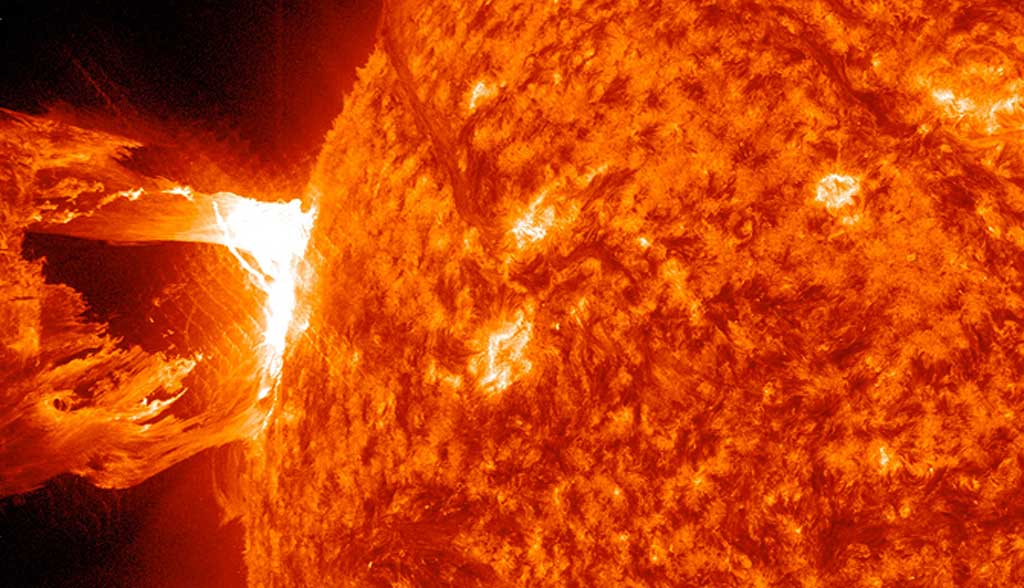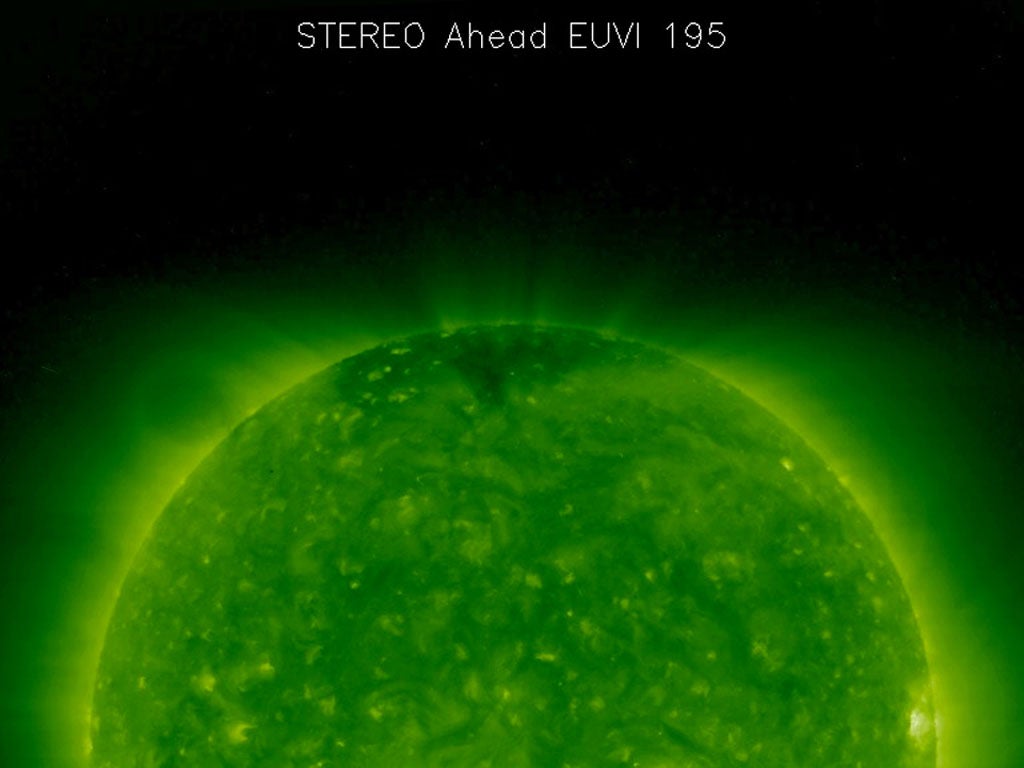The prominences are sometimes also the inner structure of a larger formation, appearing from the side almost as the filament inside a large light bulb. The bright structure around and above that light bulb is called a streamer, and the inside “empty” area is called a coronal prominence cavity.
Such structures are but one of many that the roiling magnetic fields and million-degree plasma create in the Sun’s atmosphere, the corona, but they are an important one as they can be the starting point of what’s called a coronal mass ejection (CME). CMEs are billion-ton clouds of material from the Sun’s atmosphere that erupt out into the solar system and can interfere with satellites and radio communications near Earth when they head our way.
“We don’t really know what gets these CMEs going,” said Terry Kucera from NASA’s Goddard Space Flight Center in Greenbelt, Maryland. “So we want to understand their structure before they even erupt, because then we might have a better clue about why it’s erupting and perhaps even get some advance warning on when they will erupt.”
Kucera and her colleagues have published a paper in the September 20, 2012, issue of The Astrophysical Journal on the temperatures of the coronal cavities. This is the third in a series of papers — the first discussed cavity geometry and the second its density — collating and analyzing as much data as possible from a cavity that appeared over the upper-left horizon of the Sun on August 9, 2007. By understanding these three aspects of the cavities — that is the shape, density, and temperature — scientists can better understand the space weather that can disrupt technologies near Earth.
Trying to describe a cavity, a space that appears empty from our viewpoint from 93 million miles away (149 million kilometers) is naturally a tricky business. “Our first objective was to completely pin down the morphology,” said Sarah Gibson from the High Altitude Observatory at the National Center for Atmospheric Research (NCAR) in Boulder, Colorado. “When you see such a crisp clean shape like this, it’s not an accident. That shape is telling you something about the physics of the magnetic fields creating it, and understanding those magnetic fields can also help us understand what’s at the heart of CMEs.”
To do this, the team collected as much data from as many instruments from as many perspectives as they could, including observations from NASA’s Solar Terrestrial Relations Observatory (STEREO); the European Space Agency and NASA’s Solar and Heliospheric Observatory (SOHO); the Japanese space agency and NASA’s mission Hinode; and NCAR’s Mauna Loa Solar Observatory.
They collected this information for the cavity’s entire trip across the face of the Sun along with the Sun’s rotation. Figuring out, for example, why the cavity was visible on the left side of the Sun but couldn’t be seen as well on the right held important clues about the structure’s orientation, suggesting a tunnel shape that could be viewed head-on from one perspective, but was misaligned for proper viewing from the other. The cavity itself looked like a tunnel in a crescent shape, not unlike a hollow croissant. Magnetic fields loop through the croissant in giant circles to support the shape, the way a slinky might look if it were narrower on the ends and tall in the middle — the entire thing draped in a sheath of thick plasma.
Next up, for the second paper, was the cavity’s density. Figuring out density and temperature was a trickier prospect because one’s point of view of the Sun is inherently limited. Because the Sun’s corona is partially transparent, it is difficult to tease out differences of density and temperature along one’s line of sight; all the radiation from a given line hits an instrument at the same time in a jumble, information from one area superimposed upon every other.
Using a variety of techniques to tease density out from temperature, the team was able to determine that the cavity was 30 percent less than that of the surrounding streamer. This means that there is, in fact, quite a bit of material in the cavity. It simply appears dim to our eyes when compared with the denser, brighter areas nearby.
“With the morphology and the density determined, we had found two of the main characteristics of the cavity, so next we focused on temperature,” said Kucera. “And it turned out to be a much more complicated problem. We wanted to know if it was hotter or cooler than the surrounding material — the answer is that it is both.”
Ultimately, what Kucera and her colleagues found was that the temperature of the cavity was not, on average, hotter or cooler than the surrounding plasma.
However, it was much more varied, with hotter and cooler areas that Kucera thinks link the much colder 17,000° F (10,000° C) prominence at the bottom to the 1.8 million to 3.6 million degrees Fahrenheit (1 million to 2 million degrees C) corona at the top. Other observations of cavities show that cavity features are constantly in motion, creating a complicated flow pattern that the team would like to study further.
While these three science papers focused on just the one cavity from 2007, the scientists have already begun comparing this test case to other cavities and find that the characteristics are fairly consistent. More recent cavities can also be studied using the high-resolution images from NASA’s Solar Dynamics Observatory (SDO), which launched in 2010.
“Our point with all of these research projects into what might seem like side streets is ultimately to figure out the physics of magnetic fields in the corona,” said Gibson. “Sometimes these cavities can be stable for days and weeks, but then suddenly erupt into a CME. We want to understand how that happens. We’re accessing so much data, so it’s an exciting time — with all these observations, our understanding is coming together to form a consistent story.”











